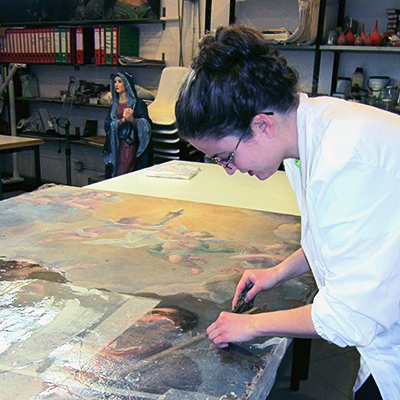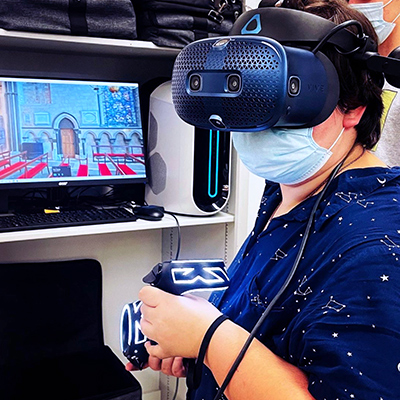Bachelor of Arts
Art is often regarded as concrete evidence of the human desire to communicate. In art history, we investigate this evidence, from building to bowl, cave painting to contemporary performance art, with a concern for form, meaning and cultural context.
Art is all around us—not just in museums or galleries—and through classes in art history, students sharpen their perception of visual images in a world where ideas and information are increasingly communicated through visual media. Winthrop art history majors develop research and professional skills that lead to internships, careers in arts organizations and admission to highly ranked graduate school programs.
Learn moreSome of the graduates of this program have gone on to work for:
Graduates of this program have gone on to become:
Many of the graduates of this program find themselves working in:
Art history students at Winthrop are engaged learners. They might tour a medieval castle using virtual reality (VR) headsets, go on a behind-the-scenes field trip to a nearby museum, curate an in-person or virtual exhibition, create an ofrenda to celebrate the Día de los Muertos or study abroad.
The Winthrop University Art History degree includes courses covering the arts of the world, from Africa to Europe and Asia to the Americas. Create a flexible course of study around art history electives that have no ladder of prerequisites to climb:
In addition, students will choose a minor that complements their interests, allowing them to gain the interdisciplinary perspective and breadth of experience that a liberal arts education is known for.
Curriculum
Gain hands-on experience through internships with museums, galleries and arts organizations throughout the region and beyond.

Bring art history to life with short-term study abroad trips to France, Ireland, Japan and more, as well as programs with Winthrop’s partner schools in Italy, England, Spain, Germany, Sweden and Australia, among others.

Winthrop's art history professors are award-winning experts in their fields, whose primary responsibility is teaching. And with class sizes that seldom reach more than 20 students, they'll get to know you, your interests and your career goals.
Many of our graduates have found success working as gallery assistants, conservationists, librarians, and educators in art galleries, universities, and museums—including the Smithsonian American Art Museum, National Portrait Gallery in Washington D.C., and National Archive in London, UK. In the past five years, 100% of art history majors who applied to graduate school have gone on to pursue master's and doctoral degrees in art history, museum studies, education, conservation, and more, at highly selective universities in the United States and beyond.